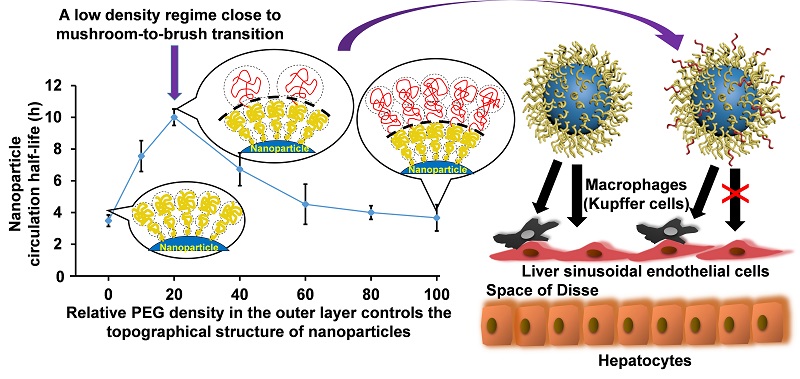Assistant Professors Hao Cheng (PI) and Andrew Magenau (Co-PI) have received a National Science Foundation grant for their project entitled "Dense and Dynamic Zwitterionic Polyether Cloaks for Next Generation Stealth Nanomaterials." The three-year grant of $359,035 will be used to (i) achieve an in-depth understanding of nanomaterials (NMs)-protein-cell interactions and (ii) develop an innovative polymer cloak with controlled dynamic surface morphology to efficiently reduce protein adsorption and complement activation on NMs, and interfere with NM-cell interactions for generating ultra-long circulating NMs.

New grafted polymer layers developed in this project are expected to generate ultra-long circulating nanomaterials, which can have broad biomedical applications.
NM-based therapeutics and imaging agents are promising for disease treatment and diagnosis. Several nanomedicines have been approved by the U.S. Food and Drug Administration, and more are under rigorous clinical studies. However, nearly all synthetic NMs are quickly cleared in the bloodstream of patients after systemic administration, limiting their biomedical applications. In the blood, plasma proteins immediately adsorb onto NM surfaces. Some of the adsorbed proteins mark NMs as foreign invaders, like bacteria, and this results in their clearance by the host cells. Effective design of long circulating NMs depends on a thorough understanding of the interactions among NMs, proteins, and cells. Currently, there is a dearth of systematic study of these interactions. This project will establish a comprehensive understanding of NM-protein-cell interactions to develop a new generation of polymers cloaks. When grafted onto NMs, these polymers are expected to dramatically extend the blood circulation of NMs by minimizing protein adsorption and controlling the kinetics of NM-cell interactions in the blood flow. Ultra-long circulating NMs may have tremendous societal benefits by improving the delivery of therapeutics. The polymer may also be used as an antifouling coating for insulin pump catheters, dialysis membranes, neural electrodes, and materials in direct contact with microbial environments.